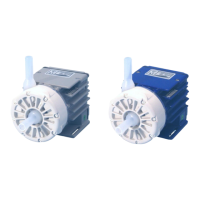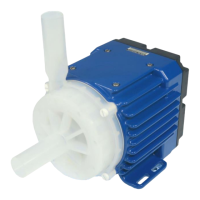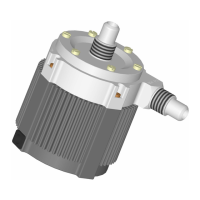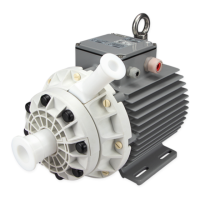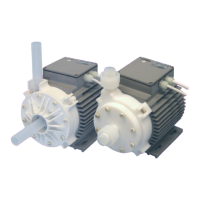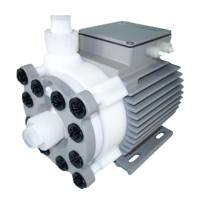3.2.1 Inrush Current
When selecting a AC/DC power supply the inrush currents (currents during power-on) shown in Table 7 shall
be considered. If the specifications of the power supply are unclear a test with multiple power-on cycles is
recommended to assure proper operation.
Table 7: Inrush currents of power supply driver during power on of driver (Measured at 24 VDC + 10%)
3.2.2 Evaluation of Power Supplies
If other power supplies than the standard specified ones are used, it is recommended to evaluate them under
demanding operating situations like fast braking from maximum speed and during power on and take-off of the
impeller.
3.3 Temperature Monitoring
To avoid overheating of the system, the controller and motor temperatures within the driver are monitored. If
one of both temperatures exceeds 80°C (158°F) for a duration of more than 10 minutes, the system goes into
an error state and the pump stops. At 90°C (194°F), the system stops immediately. If 65°C is exceeded a
warning is given within the driver announcing to the user that the driver is running near the thermal limit (see
explanation in Section 3.4). The warning signal can be monitored with the Levitronix
®
Service Software or
configured on one of the digital outputs.
3.4 Thermal Management
The driver temperature depends on the ambient and liquid temperature, as well as on the hydraulic operation
point and the cooling method. Figure 22, Figure 23 and Figure 24 illustrate the temperature characteristics of
the motor depending on these parameters. The below curves are measurements of the motor temperature at
certain liquid and ambient temperatures. Equation (Eq. 1) for convection cooling and (Eq. 2) for water cooling
show how to approximately calculate the motor temperature for other pumping liquid, ambient and cooling
liquid temperatures based on these curves.
All presented thermal data are typical values, which are partly based on measurements and partly on
interpolations with a simplified thermal model and are therefore only guideline values and are suitable for a
first layout of the basic thermal concept. It is recommended to check the thermal values with the motor placed
on the final location and under worst case performance conditions of the application. To account for thermal
variations (like ambient temperature, closed chemical cabinets or corners without ventilations) and to not
significantly reduce the MTBF of the motor it is recommended to keep about 15°C safety distance to the
absolute thermal limit of the driver (80°C) when designing the thermal concept of the pump system. It is
recommended to avoid thermal stagnation in the room or cabinet where the driver is placed. Any type of
circulation decreases the driver temperature significantly.
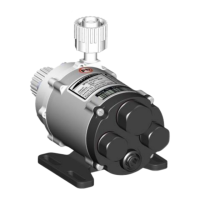
